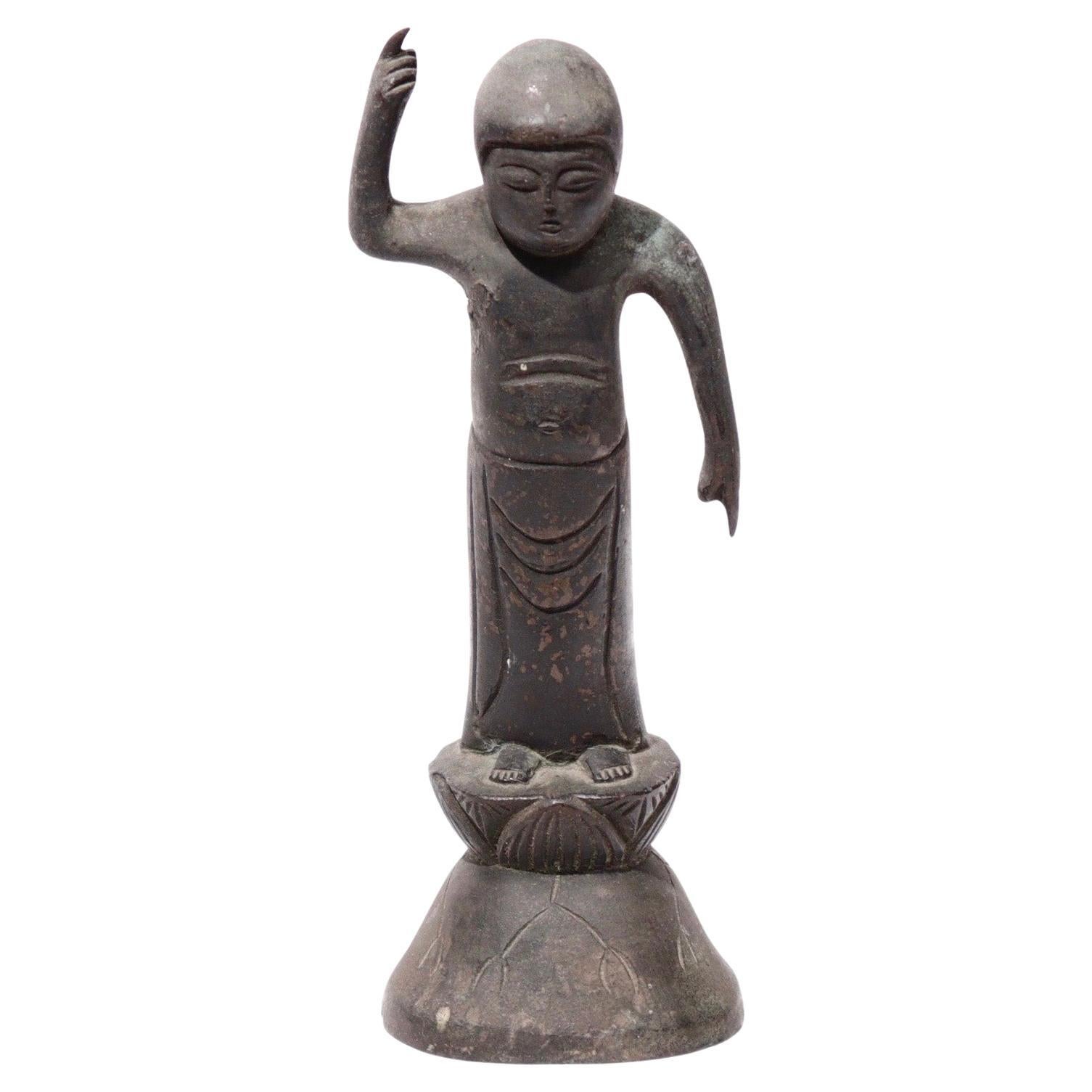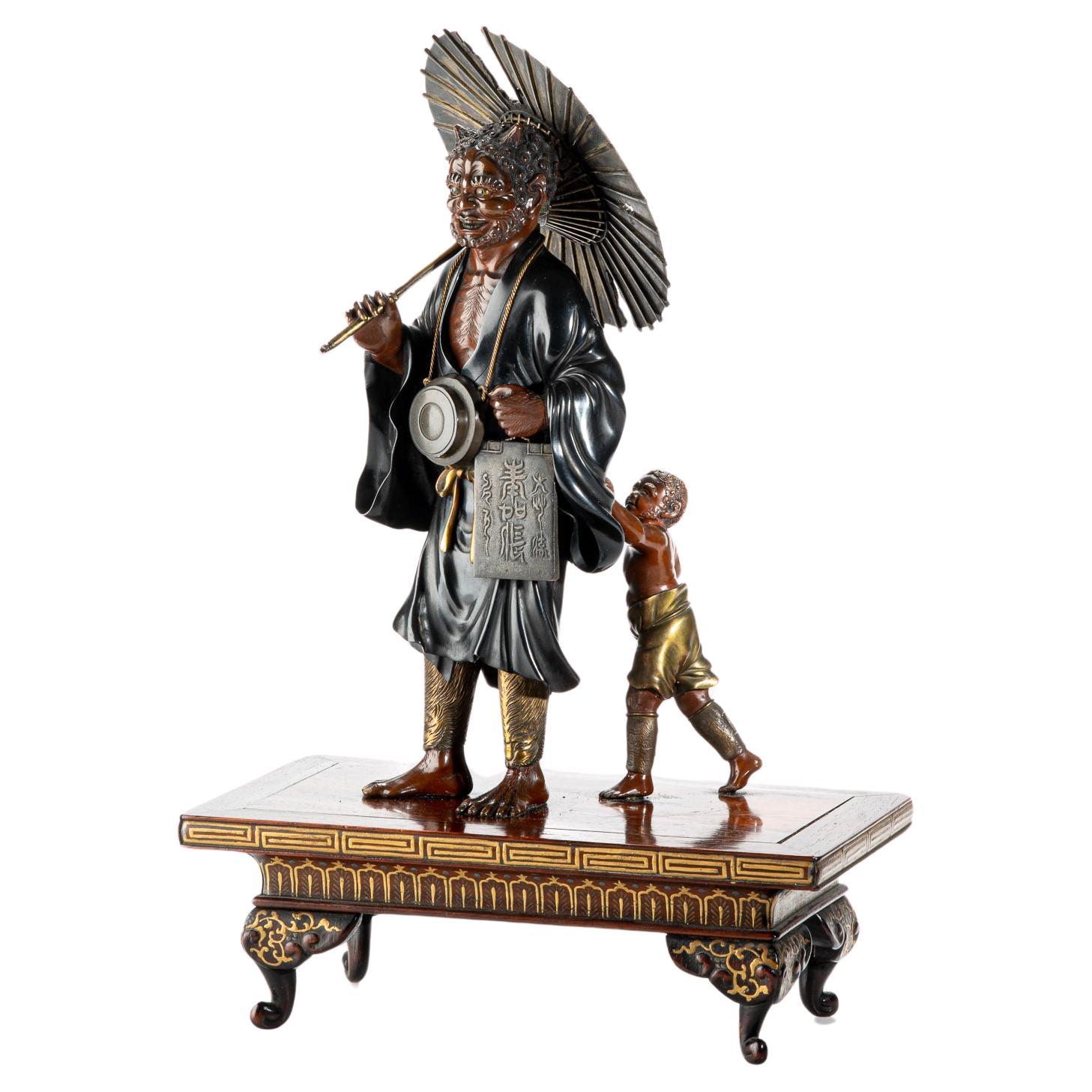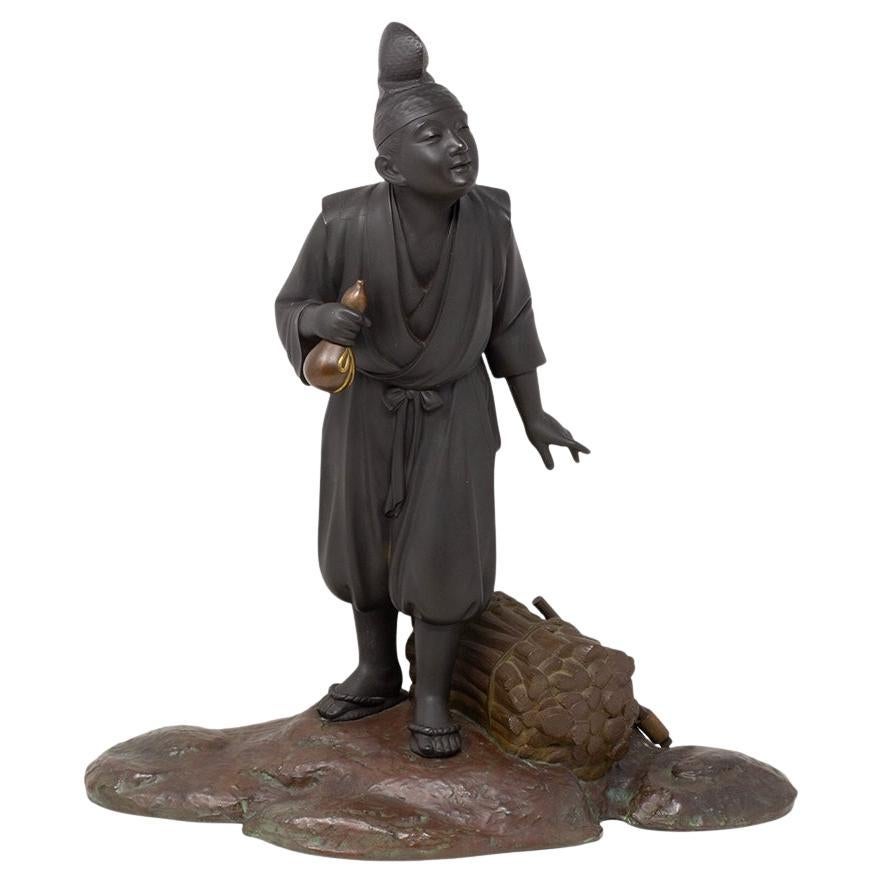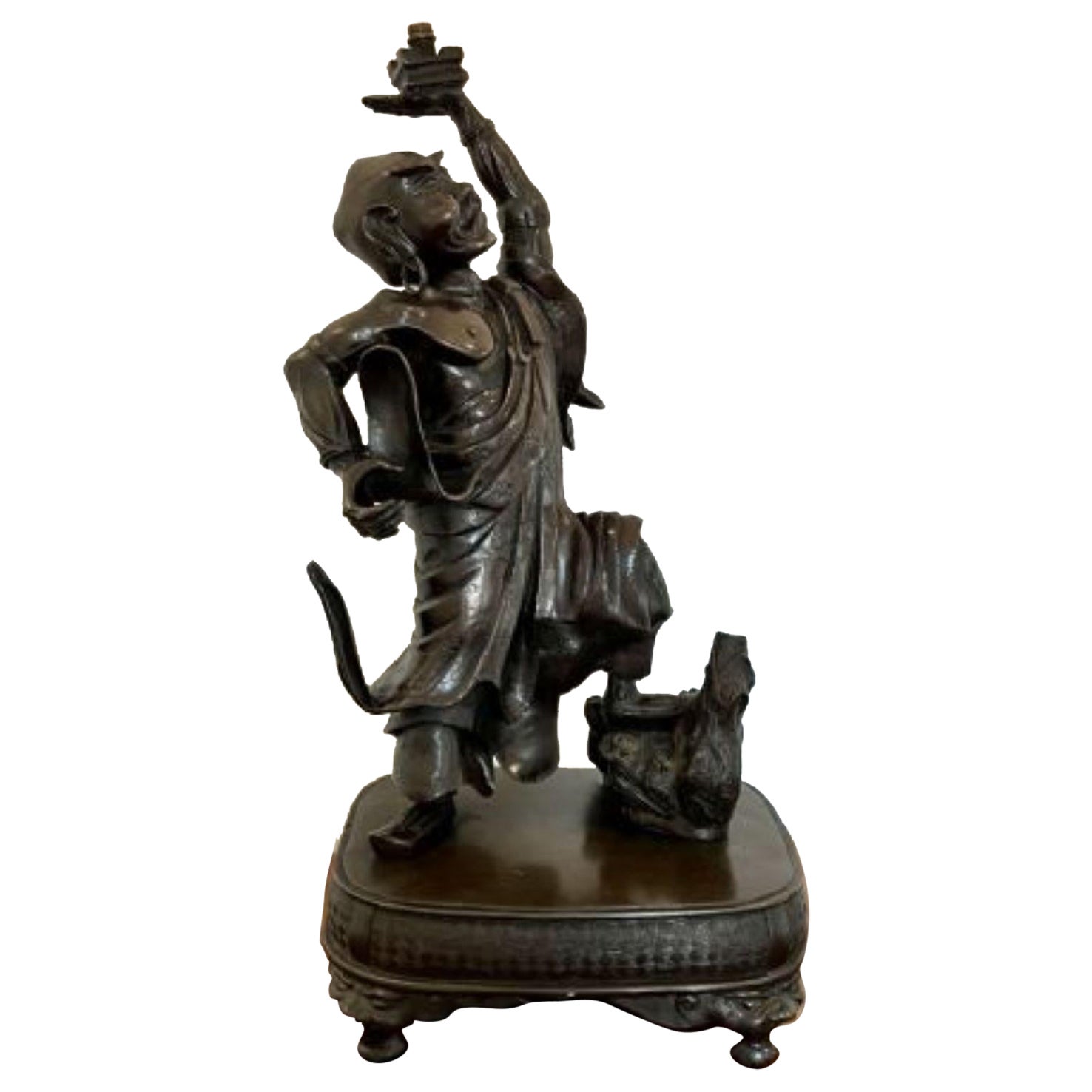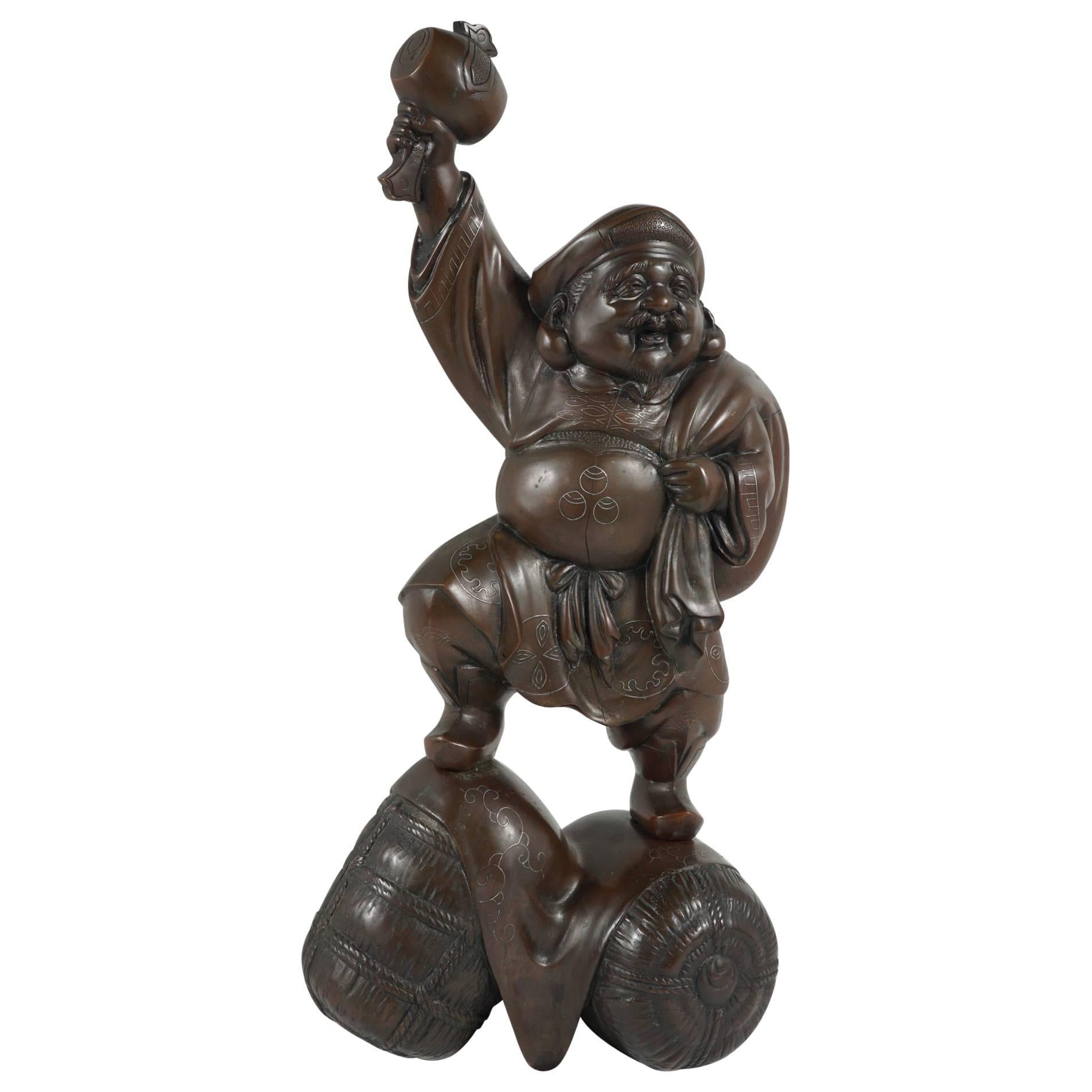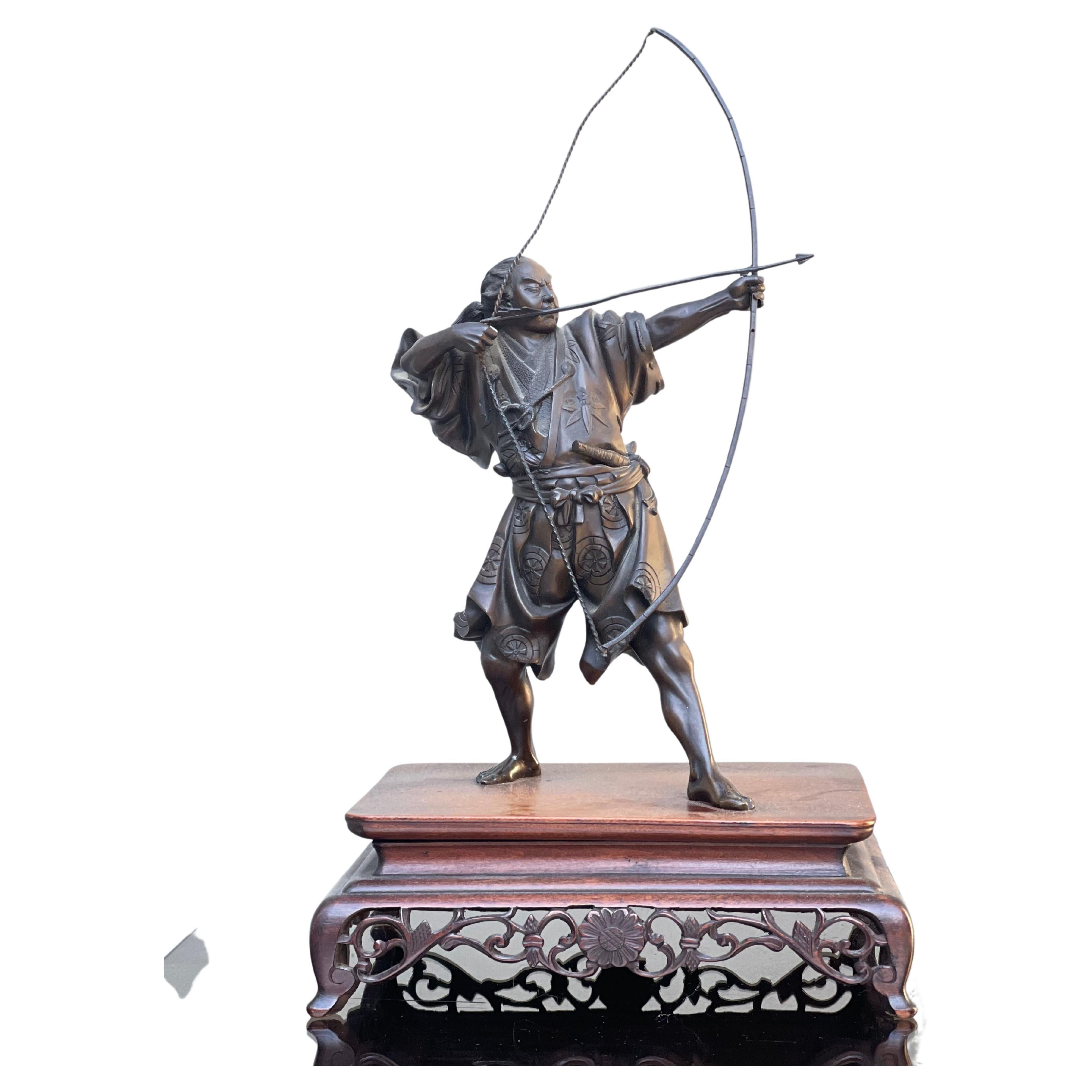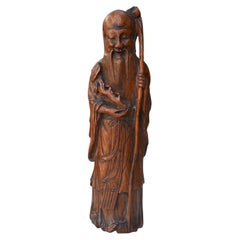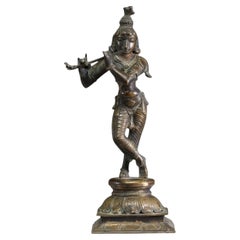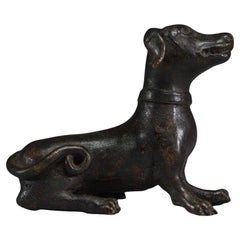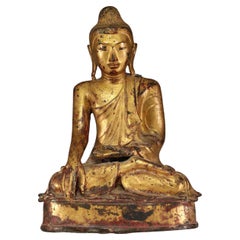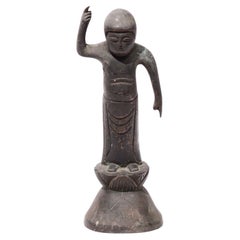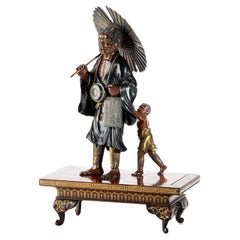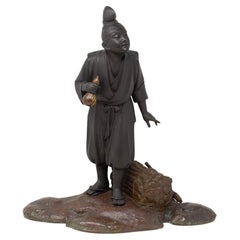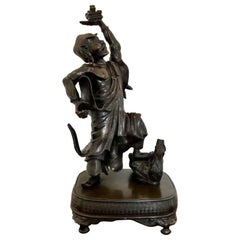Items Similar to Japanese bronze Okimono , Edo period
Want more images or videos?
Request additional images or videos from the seller
1 of 9
Japanese bronze Okimono , Edo period
$1,139.22
£847.46
€950
CA$1,559.98
A$1,734.49
CHF 905.65
MX$21,112.94
NOK 11,555.75
SEK 10,827.18
DKK 7,231.83
Shipping
Retrieving quote...The 1stDibs Promise:
Authenticity Guarantee,
Money-Back Guarantee,
24-Hour Cancellation
About the Item
Japanese bronze okimono from the Edo period in its old patina and good condition,
Beautiful quality and expression
Height 30 cm, not signed
- Dimensions:Height: 11.82 in (30 cm)Width: 3.94 in (10 cm)Depth: 3.94 in (10 cm)
- Style:Edo (Of the Period)
- Materials and Techniques:Bronze,Cast
- Place of Origin:
- Period:
- Date of Manufacture:18th century
- Condition:Wear consistent with age and use. normal age traces.
- Seller Location:Bilzen, BE
- Reference Number:1stDibs: LU10361244531822
About the Seller
New to 1stDibs
Joined in the past six months.
5.0
Gold Seller
Premium sellers maintaining a 4.3+ rating and 24-hour response times
Established in 1987
1stDibs seller since 2025
7 sales on 1stDibs
Typical response time: <1 hour
- ShippingRetrieving quote...Shipping from: Bilzen, Belgium
- Return Policy
Authenticity Guarantee
In the unlikely event there’s an issue with an item’s authenticity, contact us within 1 year for a full refund. DetailsMoney-Back Guarantee
If your item is not as described, is damaged in transit, or does not arrive, contact us within 7 days for a full refund. Details24-Hour Cancellation
You have a 24-hour grace period in which to reconsider your purchase, with no questions asked.Vetted Professional Sellers
Our world-class sellers must adhere to strict standards for service and quality, maintaining the integrity of our listings.Price-Match Guarantee
If you find that a seller listed the same item for a lower price elsewhere, we’ll match it.Trusted Global Delivery
Our best-in-class carrier network provides specialized shipping options worldwide, including custom delivery.More From This Seller
View AllAncient Chinese Qing Dynasty Carved Bamboo Statue from a Sage
Located in Bilzen, BE
A finely carved Bamboo representing a sage Chinese Qing Dynasty, 19th century
Good condition as shown in the photos Height 25.5 cm
Beautiful aged patina
Category
Antique 19th Century Chinese Qing Sculptures and Carvings
Materials
Bamboo
Bronze Statuette Of The Goddess Shiva, XIXth Century
Located in Bilzen, BE
A finely detailed bronze statue of the Goddess Shiva from the 19th century with an aged patina
Total height 23.5 cm, base 8.5 x 8.5 cm
Category
Antique 19th Century Indian Other Sculptures and Carvings
Materials
Bronze
China, Bronze Scroll Weight Depicting A Seated Dog, Qing, 18th Century
Located in Bilzen, BE
China - Bronze scroll weight depicting a seated dog, Qing dynasty, 18th century.
Beautiful old patina.
Height 9 cm, length 11.5 cm.
Category
Antique 18th Century Chinese Qing Sculptures and Carvings
Materials
Bronze
Large Buddha From Myanmar In Gilt Bronze, Mandalay Period, 19th Century
Located in Bilzen, BE
Gilded bronze Buddha in position to witness the earth, 19th century, Mandalay period (1853 - 1948)
Mandalay was considered the center of the Buddhist universe in Myanmar. King Mindo...
Category
Antique 19th Century Other Sculptures and Carvings
Materials
Bronze
China, Bronze incense burner with archaic decoration, Qing Dynasty, 19th century
Located in Bilzen, BE
China, Bronze incense burner with archaic decoration, Qing dynasty.
Brown original patina and traces of aged use
19th century
Diameter body 10.5 cm, heigth 8 cm
Category
Antique 19th Century Chinese Qing Metalwork
Materials
Bronze
Antique hardwood carved Goddes statue from India, 18th century
Located in Bilzen, BE
An antique carved hardwood statue depicting a goddes with child on her arm
The statue has a very rich aged using patina and traces
This statue is dating from the 18th century but pro...
Category
Antique 18th Century Indian Tribal Tribal Art
Materials
Wood
You May Also Like
Japanese bronze image of Tanjo no Shaka
Located in Point Richmond, CA
Japanese bronze image of Tanjo no Shaka, the infant Buddha (Shakyamuni), a standing figure with the right hand pointing towards heaven and the left hand pointing toward earth, costum...
Category
Antique 1850s Japanese Edo Metalwork
Materials
Bronze
A Japanese bronze okimono Oni Nembutsu
Located in Milano, IT
A Japanese great and remarkable bronze okimono, on a wooden base, depicting an Oni, dressed as a priest, accompanied by a young oni.
The main Oni is portrayed standing and smiling, ...
Category
Antique Mid-19th Century Japanese Japonisme Metalwork
Materials
Bronze
$7,380 Sale Price
20% Off
Japanese Bronze Okimono Sculpture by Yamamoto Kozan
Located in Newark, England
YOUNG MAN WOOD CUTTING
From our Japanese collection, we are pleased to offer this Japanese Bronze Okimono by Yamamoto Kozan. The Japanese Bronze Sculpture cast in Bronze with a natu...
Category
Early 20th Century Japanese Meiji Sculptures and Carvings
Materials
Bronze
Quality large antique Japanese bronze figure
Located in Ipswich, GB
Quality large antique Japanese bronze figure having a quality large antique Japanese bronze figure of a man holding his left arm aloft standing ...
Category
Antique Early 19th Century Victorian Sculptures and Carvings
Materials
Bronze
19th Century Japanese Silver Inlayed Bronze Representing Daikoku
Located in Hudson, NY
From the Estate of Paul & Clara Kellner. This large bronze of Daikoku or the God of Prosperity closely associated with farmers, agriculture and rice staples of Japanese life and stability. His attributes are a co-mingling of Indian Buddhist forms of Shiva and the Shinto God...
Category
Antique Late 19th Century Japanese Sculptures and Carvings
Materials
Silver, Bronze
Scultura Bronzo Raffigurazione Arciere Periodo Meiji Firmata
By Saeki Yoshimitsu
Located in Milano, MI
Scultura Bronzo Raffigurazione Arciere periodo Meiji Firmata
Descrizione:
Scultura giapponese antica raffigurazione di arciere in bronzo realizzata...
Category
Antique Late 19th Century Asian Meiji Sculptures and Carvings
Materials
Bronze
More Ways To Browse
Japanese Ceramics Edo Period Or Earlier
Japanese Bronze Sculptures
Japanese Okimono
Carved Wood Deity
Chinese Temple Carvings
Thai Wood Carving
Thailand Wood Carvings
Chinese Guanyin
Chinese Hand Carved Bamboo
Gilt Wood Buddha
Japanese Wood Bear
Netsukes
Chinese Soapstone
Chinese Stone Statue
Soapstone Chinese Furniture
Asian Bird Box
Japanese Koi
Asian Root Furniture
